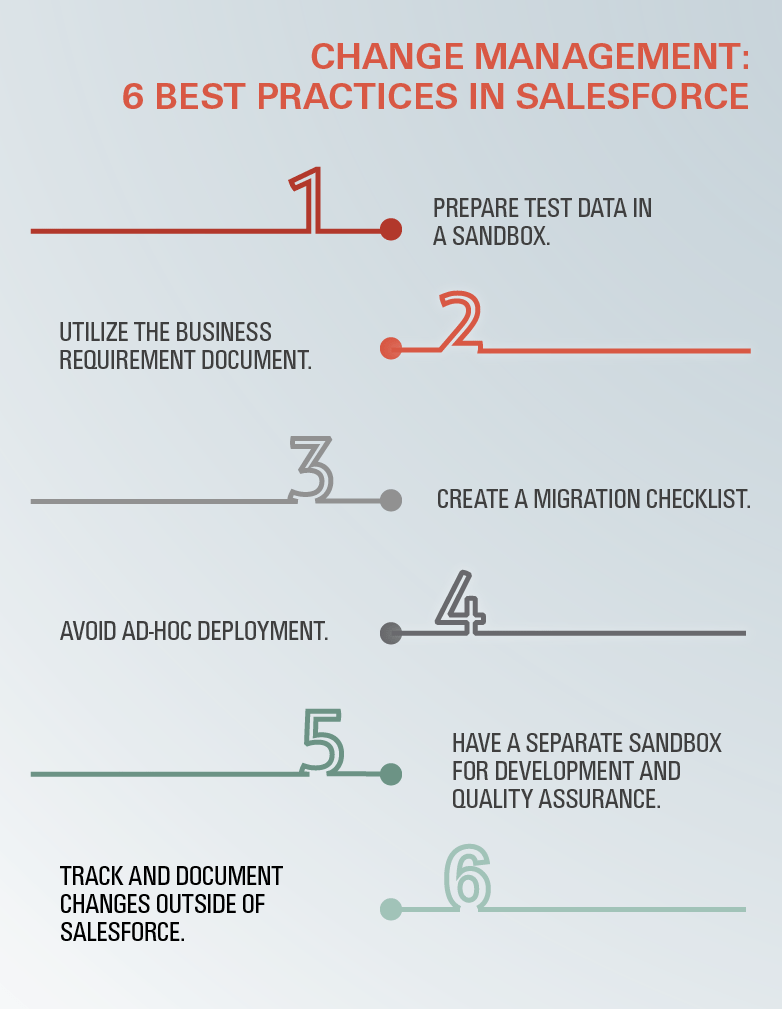Ch-ch-ch-ch-changes.
David Bowie isn’t the only one to stumble over change. But with change management being an inevitable part of computer technology, it’s helpful to master the process of change management. To achieve the greatest success in change management of applications on Salesforce, it’s important to be prepared. Here are six best practices for making this transition smooth and successful.

1. Prepare test data in sandbox.
Preparation is key. By testing in a sandbox (here’s also another great post about them), you can visualize what the customer wants, establish a time frame for changes, and evaluate all updates before they go live.
2. Utilize the Business Requirement Document.
This BRD holds a number of uses, but it’s most helpful in converting verbal requests into something tangible from which to work and adjusting time frames. Also, this document creates a track record of what services were provided for the customer in the past, which may be helpful should problems arise later on.
3. Create a migration checklist.
There is a specific method to this process, and a checklist helps the customer understand that. Completing a checklist with the customer in the preparatory stages provides them with a better understanding of the process, an opportunity to contribute specifics he or she would like added, and the ability to keep the team on track. Don’t underestimate the importance of the migration checklist. This checklist is what will keep you on task, on schedule, and within budget.
4. Avoid ad-hoc deployment.
Maneuvering through unplanned changes in the live environment means certain disaster. Things happen, of course, but a comprehensive preliminary meeting before the change begins ensures that everyone understands and anticipates changes. In this way, you can eliminate any temptations to bump up deadlines or add last-minute features after the process has started.
5. Have a separate sandbox for development and quality assurance.
There are a couple of advantages to having multiple sandboxes available for testing. As your developer goes through different stages, extra time may be needed for testing. Without an additional sandbox to use, the developer could potentially delay the changeover. Having multiple sandboxes means stages can be adjusted without jeopardizing the schedule.
6. Track and document changes outside of Salesforce.
Ask experts what they feel is the most important habit for users, and they will tell you: back up your data. The same holds true in change management. One of the greatest tools a project manager or developer relies on to fix problems is information. By documenting steps, test results, problems, and solutions, you are creating an invaluable resource for service later on.
With preparation, documentation, checklists to keep the process on schedule, and multiple sandboxes, these best practices can ensure your next migration is a melodiously successful process—and that’s something to sing about.














0 Comments